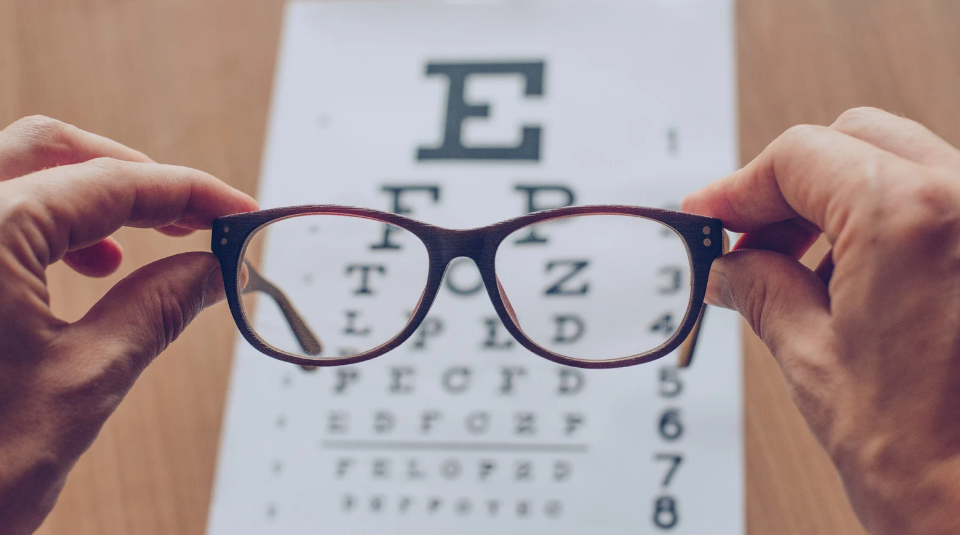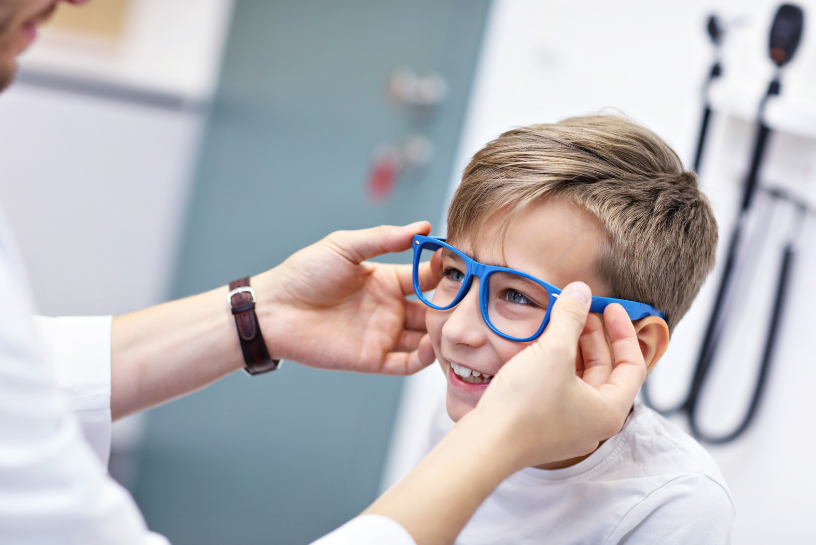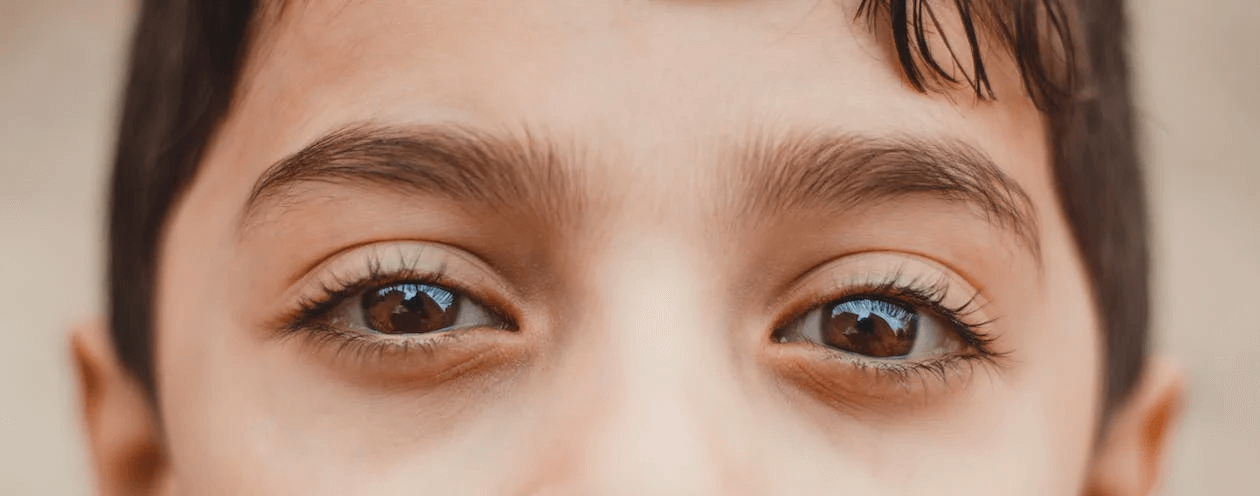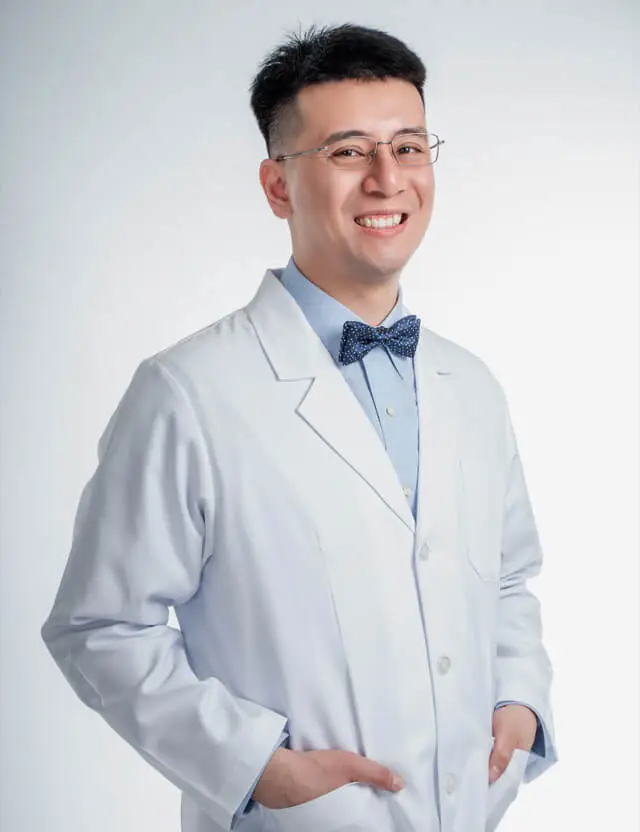Bad eyesight at a young age is frequently caused by hereditary factors, excessive screen time, inadequate lighting, a poor diet, and environmental variables. Understanding these risk factors, and implementing preventive steps can benefit children’s vision.
Although bad vision can indeed run in families, some habits you may have developed will eventually cause your vision to deteriorate. Here are a few of the most popular unhealthy behaviors that you should try to avoid.
What Causes Bad Eyesight at a Young Age?
1. Genetic Inheritance
Genetic heredity is an important factor in defining one’s vision. According to research, family history plays a crucial role in eye and other health concerns. Children who have one or both parents with myopia (nearsightedness), hyperopia (farsightedness), or other visual disorders are more likely to have comparable problems. This propensity results from transferring genes related to eye growth and function. Refractive errors, such as myopia and hyperopia, often stem from these genetic influences, affecting the optic nerve and leading to eye diseases like blurry vision.
2. Excessive Screen Time
With the introduction of digital gadgets, young people’s screen time has increased dramatically. Extended periods of time spent in front of screens can cause digital eye strain, which manifests as headaches, dry eyes, and bad eyesight.
Research shows that excessive screen usage is associated with a higher risk of developing myopia. The American Optometric Association advises the 20-20-20 rule to lessen eye strain. It calls for taking a 20-second break every 20 minutes and looking at anything 20 feet away.
3. Near Work Demands
Reading, writing, and using electronic gadgets can all cause eye strain. Prolonged near work has been linked to the development of myopia. Research published in the journal Ophthalmology discovered that youngsters who spend more time doing near-work activities are more likely to acquire myopia than those who spend more time outside.
Poor lighting, whether too dim or too much bright light, can result in eye strain and discomfort. Dim light conditions particularly strain the eyes, making tasks like reading or working more challenging and leading to diminished vision over time.
5. Poor Diet
Maintaining excellent eye health requires proper nutrition. Diets low in important minerals, including vitamins A, C, and E, zinc, and omega-3 fatty acids, can impair vision. For example, vitamin A deficiency is a major cause of avoidable blindness in children. A balanced diet of fruits, vegetables, and fish can improve eye health.
6. Lack of Eye Protection

The sun’s damaging ultraviolet (UV) radiation can cause eye damage over time, increasing the risk of cataracts and macular degeneration. Wearing sunglasses that block 100% of UV radiation is essential for safeguarding young eyes. Furthermore, using protective eyewear during sports or activities that put your eyes at danger of harm can help you avoid trauma-related vision disorders.
7. Smoking
Cigarette smoking, both active and passive, has been associated with a variety of eye disorders, including cataracts and age-related macular degeneration. Smoking can also aggravate dry eye conditions and raise the risk of uveitis, which is an inflammation of the eye’s central layer. Educating children and adolescents about the consequences of smoking is critical for their general well-being, including vision.
8. Chronic Health Conditions
Diabetes and juvenile idiopathic arthritis are chronic diseases that might impact eye health. Diabetes, for example, can cause diabetic retinopathy, a disorder that destroys the blood vessels in the retina and can result in visual loss if not treated appropriately. Regular eye examinations are essential for the early diagnosis and treatment of such disorders.
9. Environmental Factors
Pollution, allergies, and long-term exposure to dry or windy weather can all cause eye irritation and discomfort. These variables might worsen disorders such as dry eye syndrome and conjunctivitis, affecting general eye health.
10. Poor Eye Care Habits
Neglecting regular eye exams and eye care regimens might result in unrecognized and untreated visual issues. Teaching children the significance of eye health, such as appropriate cleanliness and frequent visits to the optometrist, is critical for avoiding and treating vision problems.
Conditions That Cause Bad Eyesight in Kids

Several medical conditions might cause impaired vision in young individuals. Understanding these disorders and their implications worsening eyesight is critical for early identification and treatment, especially in the context of bad eyesight genetic factors and preexisting health concerns. Here are some of the main conditions that cause poor vision in children and adolescents:
Myopia (Nearsightedness)
Research discovered that the prevalence of myopia among children aged 6 to 19 in the United States grew from 25% in the early 1970s to 42% in the early 2000s. Myopia is commonly diagnosed in school-aged children and can worsen as they develop, potentially leading to permanent vision loss if left untreated.
Hyperopia (Farsightedness)
Hyperopia, often known as farsightedness, occurs when distant objects seem more clearly than close items. This disorder affects around 10-15% of school-aged youngsters. Children with hyperopia may have headaches, eye discomfort, other eyesight problems and difficulties reading. According to research, uncorrected hyperopia in preschoolers might significantly influence their early reading abilities.
Astigmatism
Astigmatism is produced by an unevenly shaped cornea or lens, which results in blurred or distorted vision at all distances. It is a common disorder near vision that is frequently associated with myopia or hyperopia.
Astigmatism affects approximately one in every three people in the United States. According to the American Optometric Association, children with considerable astigmatism may struggle with activities that require good vision, such as reading or engaging in sports.
Strabismus
Strabismus is an eye misalignment in which one or both eyes turn inward, outward, up, or downward. This disorder can produce double vision, poor depth perception, and even amblyopia if not addressed. Strabismus affects around 4% of children in the United States. It is a genetically linked eye disease, often associated with other health problems.
Treatment options include glasses, eye exercises, and, in certain cases, surgery. The National Eye Institute emphasizes the need for early detection and treatment to avoid long-term visual issues.
Amblyopia (Lazy Eye)
Amblyopia, often known as lazy eye, is a disorder in which one eye’s vision decreases because the eye and the brain do not operate correctly together. It affects roughly 2-3% of children in the United States and is the most common cause of visual loss in children.
Early identification and treatment are critical, usually with glasses, eye patches, or vision therapy. The research discovered that early amblyopia management greatly improves children’s visual results.
Keratoconus
Keratoconus is a degenerative eye diseases in which the cornea thins and bulges into a cone shape, impairing vision. It usually starts in adolescence and worsens with time. According to a study, keratoconus affects around one out of every 2,000 persons. Contact lenses, corneal cross-linking, and, in severe circumstances, corneal transplants are also possible treatments.
Retinitis Pigmentosa
Retinitis pigmentosa is a collection of hereditary illnesses that impair the retina’s capacity to respond to light. This disorder causes slow vision loss, beginning with both night vision and blindness and proceeding to peripheral vision loss and, finally, central vision loss. It is one of the most common causes of genetic eye problems leading to progressive vision impairment.
Retinitis pigmentosa is an uncommon condition that affects around one of every 4,000 persons globally. There is no cure, although therapies aim to decrease the development and alleviate symptoms.
Diabetic Retinopathy
Diabetes retinopathy damages the blood vessels of the retina. Although it is more frequent in adults, it can also affect children who have type 1 or type 2 diabetes. According to the CDC, diabetic retinopathy affects around one-third of all diabetics over the age of 40.
Diabetic retinopathy may not create symptoms in its early stages, but it can result in visual loss as the condition continues. Regular eye exams are necessary for early identification and treatment.
Signs of Eye and Vision Problems
Some signs of eye and vision problems may include:
- Blurred or double vision
- Difficulty focusing or maintaining clear vision
- Eye strain or discomfort, especially after prolonged reading, watching television, and using gadgets.
- Frequent headaches
- Squinting or tilting the head to see clearly
- Sensitivity to light or glare
- Red, watery, or irritated eyes
- Dry eyes
- Difficulty seeing objects or text up close or far away
- Changes in color vision
- Seeing halos or experiencing distorted or dimmed vision
- Eye fatigue or tiredness
- Problems with peripheral vision or depth perception
- Trouble seeing at night
- Changes in the appearance of the eyes, such as crossed eyes or abnormal eye movements
Monitoring a child’s vision is crucial for detecting signs of myopia and other vision problems at early age. Regular eye exams are essential for maintaining the health of children’s eyes, as their vision is still developing and can be affected by factors like screen time and sleep.
If you experience any persistent or concerning changes in your vision, it is important to consult with an eye care professional for proper evaluation and guidance on corrective lenses. So visit your eye doctor for an eye exam.
Visions Skills Needed For School

Several vision skills are important for school success. These skills include:
1. Visual acuity
The ability to see clearly and sharply, both up close and at a distance. Good visual acuity is essential for reading, writing, and seeing the board or screen.
2. Visual tracking
The ability to smoothly and accurately follow a moving object with the eyes. This skill is crucial for activities like reading, where the eyes must track along a line of text.
3. Eye teaming
The ability of the eyes to work together as a team allows for proper depth perception and comfortable binocular vision. Eye teaming is important for activities such as reading and playing sports.
4. Eye-hand coordination
The ability to coordinate visual information with hand movements. This skill is vital for tasks like handwriting, using a computer, or playing musical instruments.
5. Visual perception
The ability to interpret and make sense of visual information. It involves skills like visual discrimination (differentiating between similar letters or shapes), visual memory (remembering what is seen), and visual-spatial skills (understanding the relative position of objects).
6. Visual concentration
The ability to sustain focus on visual tasks for an appropriate amount of time. Good visual concentration allows for effective studying and completing assignments.
7. Visual processing speed
The ability to quickly and accurately process visual information.
This skill is important for tasks that require rapid visual analysis, such as reading and problem-solving. It is worth noting that some children may have difficulties with certain vision skills, which can have an impact on their learning and academic performance. If you suspect any vision-related issues, it is recommended to have the child’s vision thoroughly evaluated by an optometrist or ophthalmologist.
How to Manage Vision for Children

Managing and enhancing children’s eyesight requires a mix of good habits, frequent eye exams, and targeted interventions. Here are some techniques to help youngsters maintain excellent eye health and prevent blurry vision:
Schedule Regular Eye Exams
Beginning at three, children should receive complete eye exams to check their vision and discover any issues early on. The American Academy of Ophthalmology recommends the following intervals for routine eye checkups to ensure the health of your child’s vision:
- Age 3
- Between four and five years old
- Before beginning first grade
- Every 1-2 years afterwards
Encourage Outdoor Activities
Spending time outdoors has been demonstrated to lower the risk of developing myopia. Research published in Ophthalmology discovered that each additional hour spent outside each week lowered the incidence of myopia by 2%.
Children’s can affect eyesight and benefit from being exposed to natural light through outdoor activities. Encourage youngsters to play outside regularly to balance their time spent near work and screen time.
Limit Screen Time
Excessive screen usage can cause digital eye strain and raise the risk of myopia. The American Optometric Association suggests the 20-20-20 rule, which states that every 20 minutes, take a 20-second break and stare at anything 20 feet away to decrease eye strain. Furthermore, limiting recreational screen time and promoting other activities can help computer eye strain and safeguard your child’s eyes.
Encourage Healthy Habits
For best eye health, consume a well-balanced diet rich in fruits, vegetables, and healthy fats. Ensure that youngsters get enough sleep to support appropriate eye function and growth. Encourage outdoor play so that youngsters may focus on distant things while receiving natural sunshine, which may help avoid myopia and vision problems.
Use Protective Eyewear
When youngsters go outside, glasses or contact lenses that prevent UVA and UVB radiation should be worn. Normal vision can be protected with proper eyewear that shields against harmful UV rays.
Blue light-filtering glasses are considered for lengthy screen use; nevertheless, research on their usefulness continues.
Provide Proper Lighting
Proper lighting prevents eye strain while reading or doing close work. Ensure that children have enough illumination in their study and play spaces. Research published in the Journal of Optometry discovered that poor classroom illumination and low light might substantially impact pupils’ visual performance and comfort.
Frequently Asked Questions
What is the primary cause of poor eyesight?
The primary causes of impaired vision vary, although they frequently include hereditary factors, excessive screen time, a poor diet, and inadequate eye care.
Why do some young people have poor vision?
Some young individuals have poor eyesight owing to genetic susceptibility, lifestyle decisions such as excessive screen usage, and environmental influences.
How can screen time impair vision?
A good diet, enough hydration, frequent eye workouts, and less screen time can all help to improve blurred vision. However, seeing an eye care professional is required for a proper diagnosis and treatment plan.
Summary
Poor eyesight at a young age is a complicated problem caused by hereditary, behavioral, and environmental factors. Understanding the reasons for this and applying preventive actions can help protect and enhance children’s vision.
Maintaining excellent eye health requires regular eye exams, a well-balanced diet, outdoor activities, and correct eye care routines. Early intervention and eye hygiene instruction can help youngsters have a lifetime of clear and healthy vision.
Po-Chang Hsu, M.D., received his medical doctorate from Tufts University School of Medicine in Boston. During his medical school training, Dr. Hsu worked with various patients, including adult and pediatric patients with acute and chronic conditions. Dr. Hsu’s interests include neurology, psychiatry, pediatrics, and sleep medicine.
Before medical school, Dr. Hsu finished a master’s degree at Harvard University and wrote a thesis on neuroimaging in schizophrenia patients at Brigham and Women’s Hospital, a Harvard Medical School-affiliated hospital. Dr. Hsu was also a part of the 2008 NASA Phoenix Lander Mission team, which sent a robotic spacecraft to the North polar region of Mars. Dr. Hsu also had research experience on neuroimaging in neonates at Boston Children’s Hospital, another Harvard Medical School-affiliated Hospital.
Since graduating from medical school, Dr. Hsu has worked as a full-time medical writer and consultant. In addition, he has experience writing and ghostwriting books and articles for physicians and health technology start-up companies. Dr. Hsu believes good communication between healthcare providers and patients creates the best results.
Publications
-Peer Reviewed Journal Article:
Kounaves, S.P., Hecht, M.H., West, S.J., Morookian, J.-M., Young, S.M.M., Quinn, R., Grunthaner, P., Wen, X., Weilert, M., Cable, C.A., Fisher, A., Gospodinova, K., Kapit, J., Stroble, S., Hsu, P.-C., Clark, B.C., Ming, D.W. and Smith, P.H. The MECA wet chemistry laboratory on the 2007 phoenix mars scout Lander. Journal of Geophysical Research. 2009, Mar; 114(E3): 10.1029/2008je003084.
-Poster Presentation:
2011 Harvard Psychiatry Mysell Poster Session; Boston, MA
Hsu, P.C., Rathi, Y., Eckbo, R., Nestor, P., Niznikiewicz, M., Thompson, E., Kubicki, M., Shenton, M.E. (March, 2011). Two-Tensor Diffusion Tensor Imaging of Acoustic Radiations in Schizophrenia




